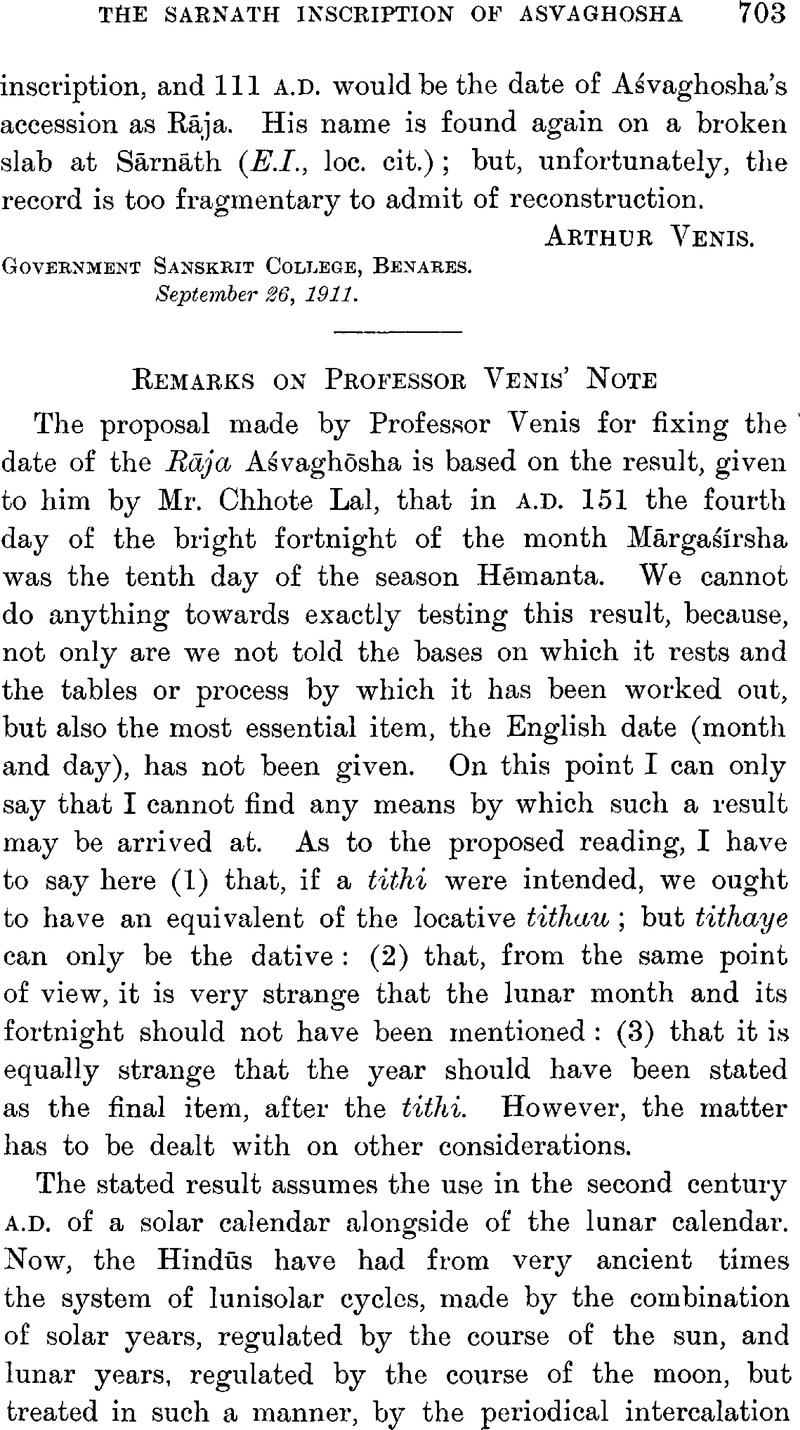No CrossRef data available.
Article contents
Remarks on Professor Venis' Note
Published online by Cambridge University Press: 15 March 2011
Abstract

- Type
- Miscellaneous Communications
- Information
- Copyright
- Copyright © The Royal Asiatic Society 1912
References
page 704 note 1 For the date in A.D. 919 or 946, see Kielhorn's List of the Inscriptions of Southern India, Epi. Iid., vol. 7, appendix, No. 691: for the date in A.D. 943, see Epi. Ind., vol. 8, p. 261, A; it has been noticed by me in this Journal, 1911. 691, (4). The month Makara begins at the Hindū winter solstice, when the sun enters the sign Makara (Capricornus): the month Karkataka begins at the Hindu summer solstice, when the sun enters the sign Karka (Cancer).
page 705 note 1 We learn these and various other details from the Jyōtisha-Vēdāṅga.
page 705 note 2 This was done by making the bright fortnights of Phālguna, Vaiśākha, Āshāḍha, Bhādrapada, Kārttika, and Pausha, consist of only 14 days; all the other fortnights having 15 days each: see the Kauṭilīya Arthaśāsfcra, ed. R. Shamasastry, p. 60, the last three lines. For other information about the calendar see p. 108.
page 706 note 1 Epi. Ind., vol. 10, appendix.
page 706 note 2 Dr. Vogel has asked me to explain that these additional words were not included in the estampages from which he dealt with this record in Epi. Ind., vol. 8, p. 171, and that he had notbeen able to supervise in person the preparation of the estampages or to compare them, afterwards with the original.




